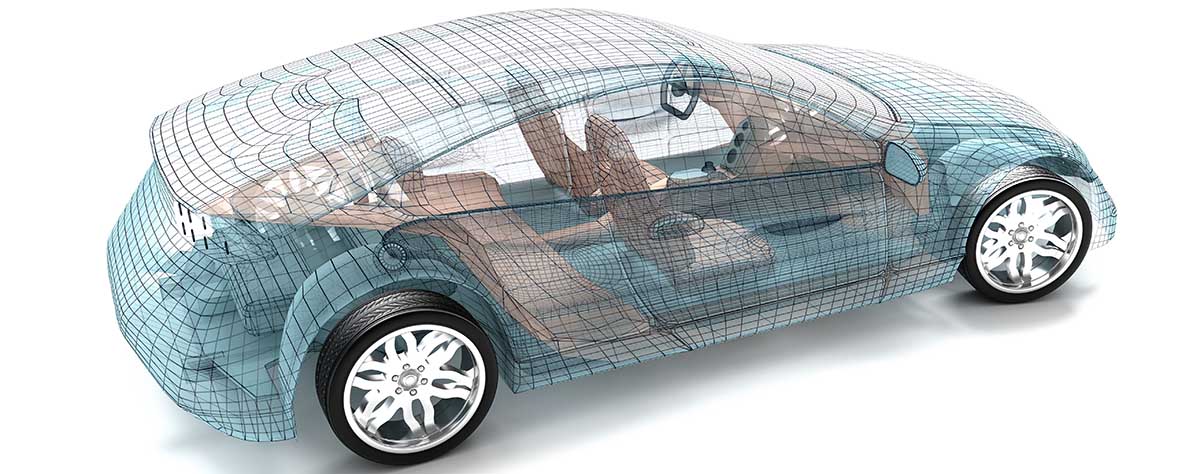Phoenix Car Parts 101
Cars can be very overwhelming, especially when they stop working. To help our customers get a better understanding of what’s going on inside their vehicle we want share some basic “parts of the car” information. Most modern cars contain computerized systems that are beyond most peoples understanding of all but most specialized technicians, knowing the basic parts of your car and how it functions make it easier to spot problems, and to be a more responsibly driver.
The Engine
Every car is powered by an engine, and most cars use a combustion engine that runs on gas. Gas, along with air, is drawn into a combustion chamber where it is compressed and ignited by a spark. The resulting combustion provides a power stroke that, when repeated rapidly, powers the car. Engines are often referred to by the number of cylinders they have, and each cylinder contains its own combustion chamber. A car’s overall power is a function of the size of the engine as well as factors such as the timing of the combustion and the type of transmission used. Additionally, with a greater care of our environment we are seeing more electric and hybrid vehicles out there. the hybrid vehicles are as the name implies, a combustion engine combined with an electric engine to optimize gas mileage. And finally the all electric, run by an electric engine and powered by batteries, most commonly lithium.
The Drive Line
The drive line is a series of components that connect the motion produced by the engine to the wheels of the car to provide forward (or backward) motion. The engine is connected to a [drive shaft](https://itstillruns.com/drive-shaft-5387319.html) (a rigid metal shaft) via the transmission. Whether a car uses an automatic or manual transmission, the function is the same: to use metal gears to match the engine’s speed to the power requirements of the car, which depend on vehicle speed, the slope of the road surface and the weight of the car itself. Additional gears transmit power from the drive shaft to the wheels themselves.
The Electrical System
A car’s electrical system is powered by a rechargeable battery that draws its power from the engine itself, which acts as a generator. The battery is used to start the car, providing the initial motion of the engine and powering items such as the fuel pump and starter. A car’s battery is also used to power the headlights, radio, dashboard gauges, turn signals and an array of safety sensors. Most cars also have additional uses for the electrical system such as power automatic windows or door locks. All of these electrical items are wired to the battery with a series of fuses ensuring that the electrical system can continue to function even if one part fails.
Brakes and Wheels
Various types of wheels and tires are useful for driving under specific conditions. All-season tires, for example, have the versatility of being used throughout the year, even if severe conditions occur. A car’s brakes are one of its most important safety features and generally come in one of two types: disc or drum. Disc brakes use a spinning disc, which is pinched between brake pads mounted on calipers to slow the motion of the car. Drum brakes use shoes that push outward to contact the inside of a spinning cylinder, or drum. Some cars contain both types of brakes (one type for the front wheels, another for the rear wheels) to take advantage of the best each type of braking system has to offer.
Dashboard Instruments
One of the most visible parts of a car is its instrumentation. Most drivers are aware of the speedometer and fuel gauge, but other dashboard instruments are equally important. A tachometer, which displays engine speed in rotations per minute (RPM), indicates how hard the engine is working. An oil pressure gauge or engine temperature gauge can be useful in diagnosing common problems, such as a leak of oil or engine coolant respectively. Stopping a car when oil pressure begins to drop or temperature begins to rise can avoid catastrophic engine failure.
If you would like to learn more about your vehicle feel free to contact Perez Auto Repair online via phone 602-269-3576 or stop into our facility located at 429 S. 35th Ave, Phoenix, AZ 85009.


